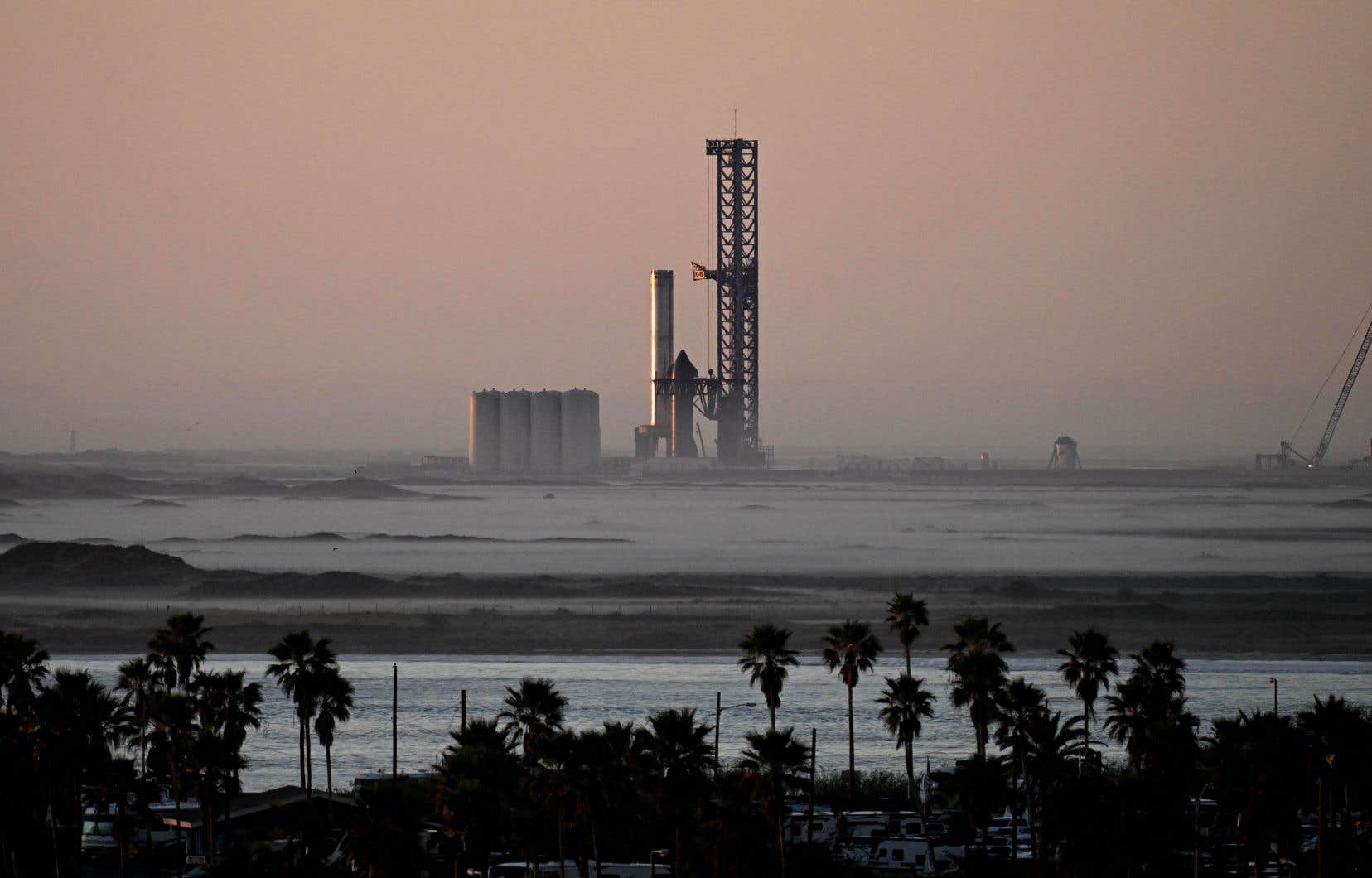According to Elon Musk’s company, SpaceX on Saturday launched the largest and most powerful rocket ever built, Starship, whose two stages successfully separated before exploding.
“Nominal spacecraft trajectory,” we heard on SpaceX’s live video feed minutes after the rocket’s launch. A first launch in spring ended with a gigantic explosion.
The huge 120-meter-high rocket lifted off shortly after 7 a.m. local time (8 a.m. Montreal time) from the SpaceX base in Boca Chica in the far south of Texas in the southern United States.
The Starship module placed on the rocket successfully separated from the Super Heavy booster stage, but the two parts of the rocket did not survive their planned descent and exploded in flight, according to SpaceX.
The rocket consists of two stages: the Super Heavy propulsion stage with its 33 engines and the spaceship Starship placed above it, which in the broader sense gives the entire rocket its name.
“What we believe at the moment is that the second stage automatic flight abort system appears to have triggered very late in the thrust,” a commentator explained on the video feed.
For space sector analyst Laura Seward Forczyk, it was “a fantastic partial success.” This launch “exceeded my expectations,” she told AFP.
The second test flight of SpaceX, the company owned by billionaire Elon Musk, is being watched particularly closely by NASA, which relies on this ship for its return flights to the moon.
” Opportunity “
The head of the US space agency, Bill Nelson, congratulated SpaceX on Saturday on the “progress” on this launch and referred to an “opportunity to learn and then fly again”.
“Together, NASA and SpaceX will take humanity back to the Moon, Mars and beyond,” he wrote on X (formerly Twitter).
On April 20, Starship launched in its full configuration for the first time. But several engines malfunctioned and SpaceX intentionally blew up the rocket after four minutes.
The launch left a cloud of dust several kilometers from the launch pad, which itself was heavily damaged. Chunks of concrete were catapulted by the power of the engines and a fire broke out in a nearby regional park.
The US Federal Aviation Administration (FAA) opened an investigation before finally giving the green light for a second flight on Wednesday.
Within seven months, the launch pad was rebuilt and a water flooding system was installed and tested. These streams of water that emerge when the engines start must dampen the sound waves and thus limit vibrations.
But associations are filing a separate lawsuit against the FAA, accusing it of misestimating the environmental impact of the new rocket.
During the first test, the two stages failed to separate in flight before finally succeeding on Saturday.
The flight plan was the same as in April: The ship was supposed to make an “almost complete circumnavigation of the earth” and land in the Pacific off the coast of Hawaii, Elon Musk had described.
Reusable
However, Starship development does not appear to be fast enough to fit into the plans of NASA, which has signed a contract with SpaceX. A modified version of the machine will serve as a lunar lander to bring astronauts to the lunar surface for the first time since 1972.
This mission, called Artemis 3, is officially scheduled for 2025 – a date that seems increasingly unrealistic.
Beyond the Moon, Elon Musk wants to make Starship a “widespread means of transportation to every destination in the solar system,” including Mars.
Their goal is to establish an autonomous colony on the Red Planet to make humanity a multiplanetary species.
But Starship’s real innovation is that it must be fully reusable, as the two stages are designed to eventually land back on their launch pad – reducing costs. Currently, only the first stage of SpaceX’s Falcon 9 rocket is being recovered.
Starship is larger than both NASA’s new mega rocket SLS (98 m), which launched for the first time a year ago, and the legendary Saturn V, the rocket for the Apollo lunar program (111 m).
Starship’s launch thrust is also about twice as strong as those of these two launch vehicles.

